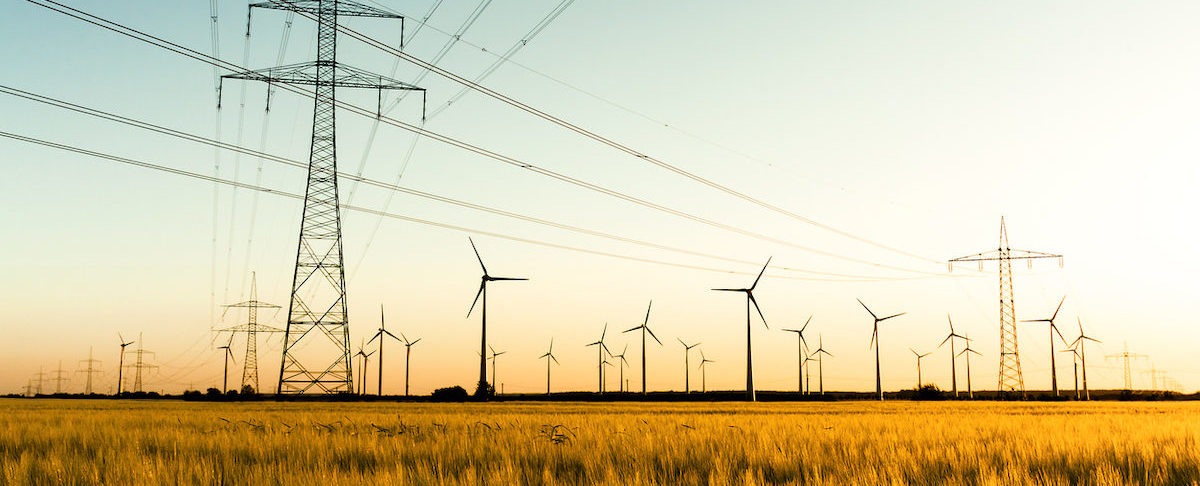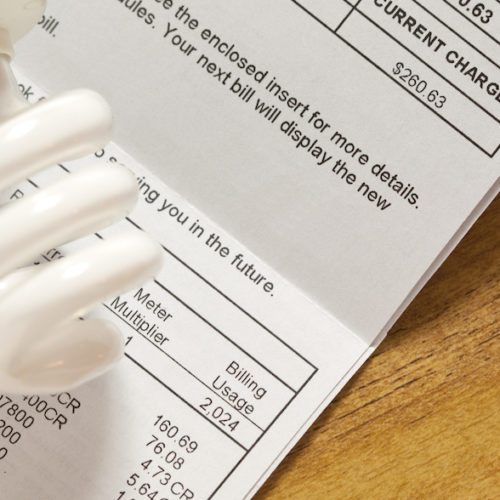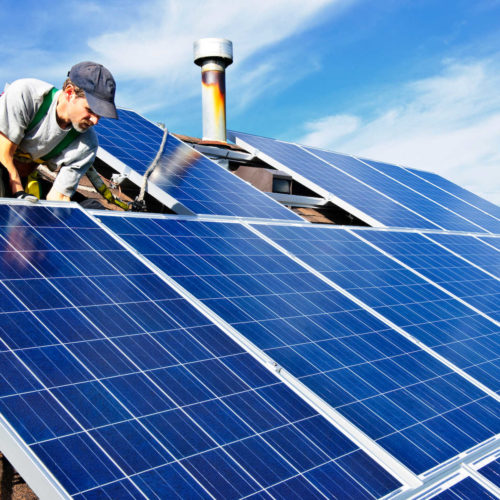Corn field with power poles and wind turbines. Photo taken in autumn sunlight shortly before sunset.

One Simple Tax Change Could Unlock Critical Clean Energy Infrastructure
How Inserting a Key Provision Could Save Americans Billions and Accelerate the Transition to a Cleaner and More Reliable Power System
The proposed Build Back Better Act can be a transformative climate package—thanks in large part to efficient tax incentives that can rapidly accelerate the clean energy transition to meet climate targets and reduce electricity rates. The draft text with a multi-year extension for clean energy tax credits is a vast improvement over a previous policy of short-term renewals that created uncertainty in the renewable energy market.
Although the current design addresses many limitations that prevented incentives from maximizing clean energy usage in the past, a simple change in the tax rules for stand-alone battery storage and transmission could make the bill more effective for both customers and the electricity grid. Implementing this shift would enable more renewable energy on the grid and will ultimately make electricity more reliable and affordable.
Changes We’re Excited About
Three vital changes are already included in the Build Back Better Act, including a few that RMI has previously proposed:
- The bill provides the option for solar developers to claim a production tax credit (PTC) like the one that fueled the growth of the wind industry over the past two decades. Unlike the investment tax credit (ITC) granted to solar in the past, a PTC rewards performance rather than the cost of construction. Furthermore, the PTC would be granted for 10 years, providing steady payments that benefit both utilities and customers in the form of lower energy prices. According to modeling from the Rhodium Group, allowing renewables to choose between the ITC and PTC would double emissions reductions by 2031 compared with a straight 10-year extension of the current tax credits.
- The bill also allows developers to choose direct pay of tax credits. Most clean energy developers and utilities do not have the tax liabilities necessary to claim tax credits and require complicated tax equity workarounds. This ultimately reduces the share of tax benefits that are passed onto consumers in the form of cheaper energy. Changing these tax credits to direct pay would allow them to be refunded directly to developers—maintaining the credit’s whole value and further lowering the cost of clean energy.
- Finally, the bill allows stand-alone battery storage and transmission to qualify for the ITC. Both storage and transmission are critical for reducing the variability of renewables like wind and solar—allowing the grid to more rapidly absorb a higher penetration of clean energy.
What Still Needs Work
Because technologies such as storage and transmission primarily support grid reliability and resilience rather than produce electricity, the ability to incentivize them with the ITC (rather than the PTC) is crucial. Unfortunately, as currently written, the ITC for storage and transmission will still be hampered by a “tax normalization” requirement. Normalization requires regulated utilities to keep some of the financial benefit of the ITC exclusively for its shareholders. This means they can only pass along a portion of the tax savings to customers—in small increments and over a long period of time.
When this requirement was put in place, it was intended to balance the interests of electricity customers, while rewarding utility shareholders for taking the risk to help deploy new energy technologies. However, in practice, it has only served to disincentivize utilities and their regulators from deploying clean energy technologies eligible for the ITC by making utility costs significantly more expensive for their customers.
Right now, non-utility developers are not subject to normalization and can pass on the full ITC benefits in the form of lower prices for power purchase agreements. But the clean energy transition will also require plenty of new standalone storage and transmission lines—where utility ownership and operation may be an important option. If this critical infrastructure is built with the burden of normalization in place, consumers will pay an unnecessary price premium. This will give utilities an excuse to slow walk or delay decarbonization planning for which transmission and storage are essential.
The Simple Change that Could Make All the Difference
RMI analysis shows that for every billion dollars spent on transmission and storage, including an option to opt out of normalization would save about $150 million over the technology’s lifetime. In other words, not including a normalization opt out provision would increase costs by about 15 percent for new transmission and storage. And given that we will need tens of billions of dollars of investment in transmission and storage over the next three decades to limit catastrophic levels of warming and the worst of climate change, allowing utilities to opt out of these rules for technologies eligible for the ITC such as storage and transmission would save billions of dollars. Ultimately, this would translate to lower electricity rates for customers all while increasing grid resilience and reducing emissions.
In fact, our analysis shows that allowing utilities to opt-out of tax normalization could reduce carbon emissions by an additional 50 million metric tons annually—equivalent to about 3 percent of today’s emissions from the electricity sector—and save regulated utility customers over $1 billion annually by 2030.
Congress has done an excellent job at making the tax credits more accessible, efficient, and effective— but we need one more key provision to make grid assets more affordable, and to ultimately lower customer electricity costs. Allowing utilities to opt out of tax normalization rules for technologies eligible for the ITC such as storage and transmission is a simple change that would make the clean energy transition even cheaper and enable higher levels of variable clean resources like wind and solar. As final negotiations take place for the Build Back Better Act, Congress should include these opt-outs to maximize customer savings and ensure a balanced, stable, cleaner energy grid.

